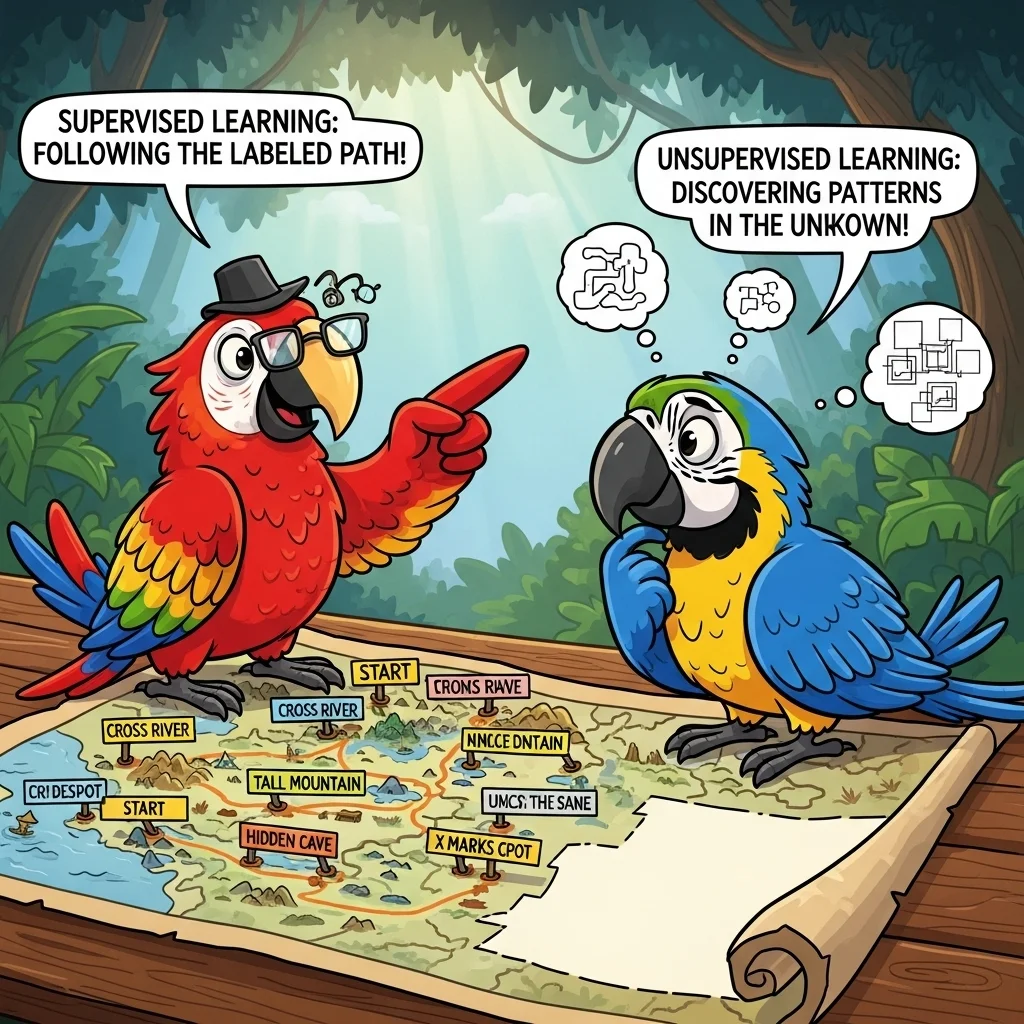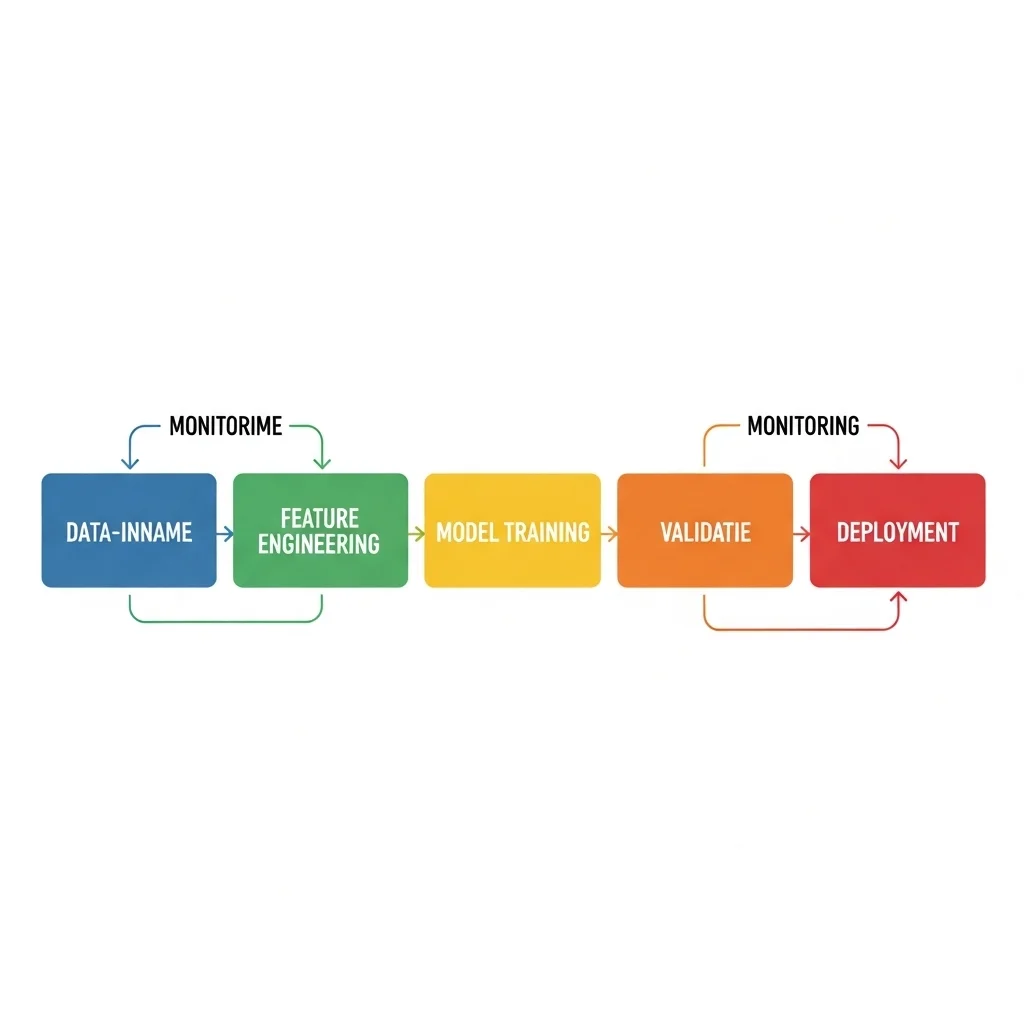Machine learning is a branch of artificial intelligence that enables systems to learn from data and make predictions or decisions without explicit programming. This knowledge-base article clearly and concisely explains core concepts, key techniques, typical applications and recent developments.
What is machine learning in a nutshell?
What exactly do we mean by machine learning, and how does it differ from other forms of software development?
Key takeaways:
Machine learning is a discipline within AI that uses statistical algorithms to learn patterns in data and generalise them to new data.
The main learning paradigms are supervised learning, unsupervised learning, reinforcement learning and self-supervised learning.
Deep learning, based on neural networks, powers many modern applications, including image recognition and language models.
Successful implementation requires careful data management, model validation, monitoring and attention to privacy and bias.
Actionable insight:
Start by defining the business objective, secure high-quality data, choose simple models as a benchmark, and scale to more advanced techniques when necessary. See also the organisational introduction on Starten met AI
Definition and key concepts
Machine learning is the field within artificial intelligence concerned with developing algorithms that automatically recognise patterns in data and then make predictions or decisions based on those patterns. Unlike traditional software, where behaviour is explicitly programmed, an ML system learns its behaviour from examples and data with the aim of generalising to new, unseen situations.
Key concepts include training, validation and inference. During training a model optimises its parameters on a dataset. Validation measures how well the model generalises, while inference is the process where the trained model makes predictions on new data. Generalisation—the heart of machine learning—is the extent to which a model continues to make correct predictions outside the training data.
Types of machine learning and when to use them
Supervised learning uses labelled data to train a model for predictive tasks such as classification and regression. Examples include spam detection, price forecasting and medical diagnosis. Unsupervised learning searches for structure in unlabelled data, typically for clustering and dimensionality reduction, for instance customer segmentation or anomaly detection.
Reinforcement learning trains agents through rewards and penalties and is suited to decision problems with sequential actions, such as robotics or trading. Self-supervised methods extract supervision from unlabelled data and underpin many modern language models and foundation models.
Deep learning, a sub-domain of ML, uses deep neural networks and is effective for complex data types such as images, audio and natural language. These models require large amounts of data and compute power but often deliver superior performance.
Practical implementation: data, models and validation
Success with machine learning starts with data. Data must be representative, clean and sufficiently large for the chosen model. Feature engineering—the transformation of raw data into model-friendly features—remains crucial in many applications, even though some deep-learning methods reduce the need for manual features.
Model selection and evaluation depend on the problem and the desired metrics. For classification, metrics such as accuracy, precision, recall and F1-score are used. For regression, RMSE and MAE are common. Overfitting—when a model performs too well on training data but fails on new data—is mitigated with techniques such as regularisation, cross-validation and more data.
In production, monitoring model performance is essential. Models age as data distributions shift, so retraining pipelines and MLOps practices are necessary. To integrate AI solutions into existing systems, bespoke chatbots or retrieval-augmented generation systems can be developed; see examples at AI-chatbot maatwerk and AI services
dataset = laad_data('train.csv')
model = init_model(architectuur='simple_nn')
for epoch in range(1, N_epochs+1):
batch_loss = 0
for batch in dataset.batches(size=32):
preds = model.forward(batch.inputs)
loss = loss_function(preds, batch.labels)
model.backward(loss)
model.update(learning_rate)
validate(model, validation_set)
save_model(model, 'model.pkl')
Risks, ethics and governance
Machine learning introduces both technical and non-technical risks. Bias in training data can lead to discriminatory outcomes, and a lack of transparency reduces trust in decisions. Privacy is a major concern, especially for models processing personal data. Regulation and governance are on the rise, and organisations should adopt responsible AI principles and technical safeguards such as model explainability, data minimisation and reliable logging. For considerations around LLM data privacy, see the article on Spartner
Recent developments show a rapid evolution in foundation models and LLMs, creating new opportunities for automation and smart products while demanding policy attention around safety and compliance.
REFERENCES
IBM, "What is Machine Learning (ML)?" https://www.ibm.com/think/topics/machine-learning
Wikipedia, "Machine learning" https://en.wikipedia.org/wiki/Machine_learning
Microsoft Azure, "What is machine learning?" https://azure.microsoft.com/nl-nl/resources/cloud-computing-dictionary/what-is-machine-learning-platform
Spartner, relevant services and background articles: Starten met AI, AI-chatbot maatwerk, and LLM privacy considerations
What is the difference between machine learning and artificial intelligence?
Machine learning is a sub-field of artificial intelligence focused on algorithms that learn from data. AI is a broader term encompassing all techniques that enable systems to make decisions or perform tasks autonomously, including rule-based systems and symbolic AI.
What kinds of problems can be solved with machine learning?
Machine learning is suitable for predictive tasks, pattern recognition and decision automation—for example forecasting customer behaviour, image and speech recognition, fraud detection and recommendation systems.
Which steps are essential before model training starts?
Preparation involves defining the goal, collecting and analysing data, performing data cleaning and feature engineering, and setting up validation sets and measurement methods.
How is overfitting prevented and how do you know a model generalises?
Overfitting is mitigated with techniques such as cross-validation, regularisation, early stopping and enlarging the dataset. Generalisation is assessed through performance on a separate test set and by monitoring in production.
What role does deep learning play within machine learning?
Deep learning employs large neural networks and is powerful for unstructured data such as images, audio and text. When sufficient data and compute are available, deep-learning models often deliver the best performance.
Is machine learning suitable for every company?
Machine learning makes sense when relevant data is available, a clearly measurable objective exists and the expected benefits outweigh the investments in data engineering and model management.
Which recent trends are influencing real-world practice?
Recent trends include the spread of large language models and foundation models, improved self-supervised training methods and wider adoption of MLOps for reliability.
Which literature and resources are reliable starting points?
Technical and practical resources such as IBM’s overview article, Microsoft Azure documentation and the encyclopaedic explanation on Wikipedia provide solid introductions.



